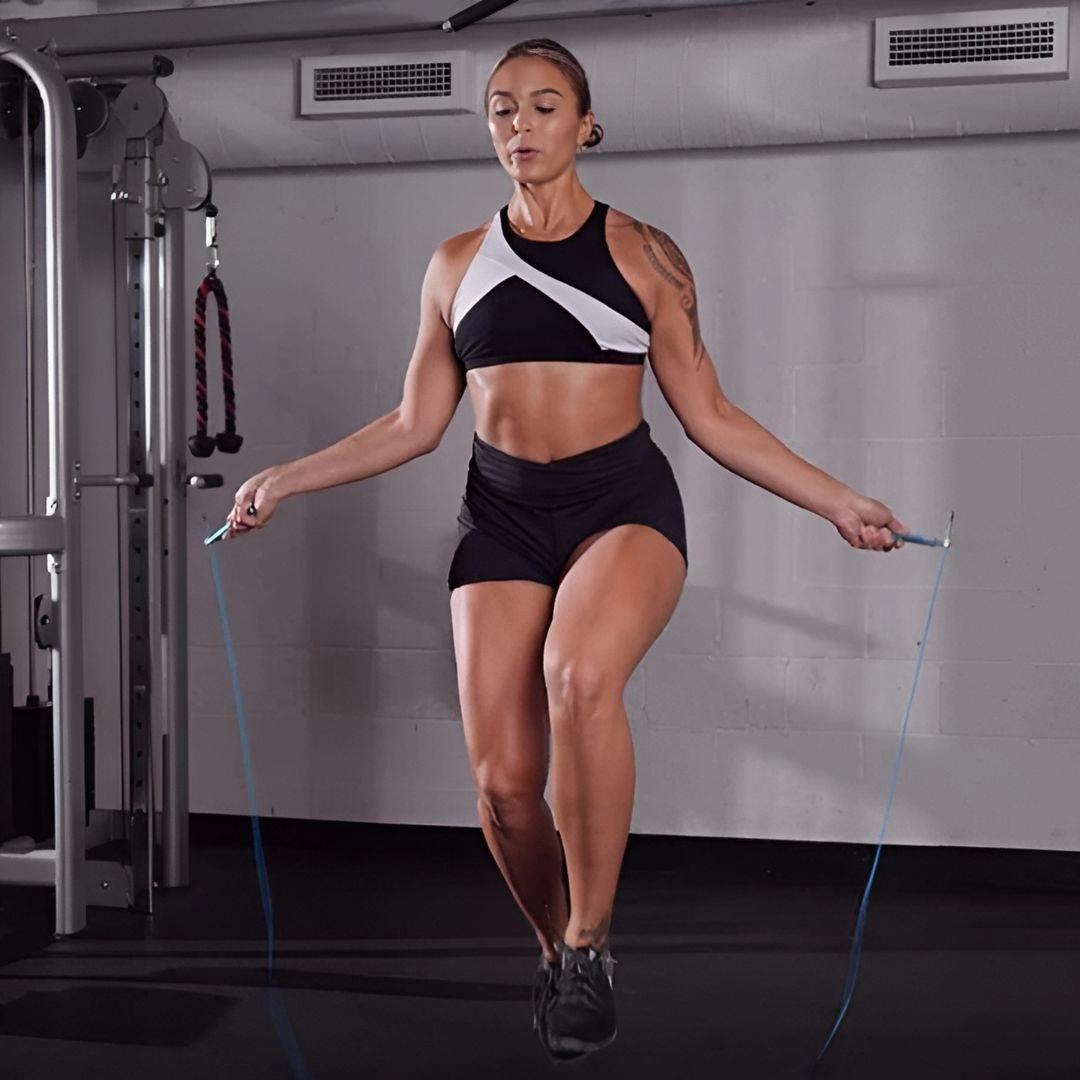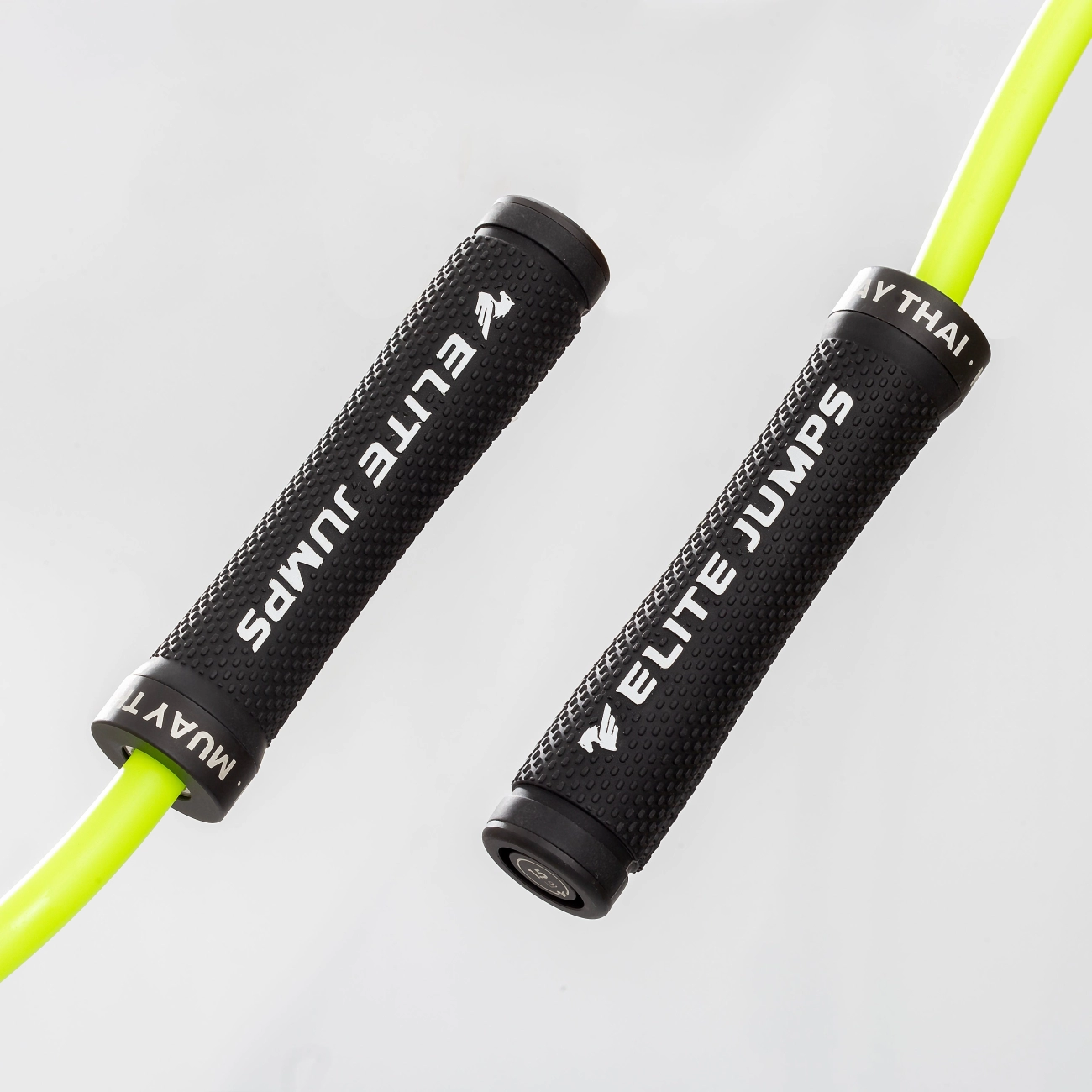How many minutes of skipping rope equals one mile? Skipping rope has surged in popularity as a quick, effective cardio workout, but pinning down exactly how it stacks up against running that classic mile can be tricky. Whether you’re tracking calories, optimizing your fitness routine, or simply mixing up your cardio, understanding the equivalency between skipping time and running distance is a game changer.
In this post, you’ll get clear, practical answers about converting your skip time into a mile-equivalent workout, plus the key factors that influence this comparison. Ready to see how 10 or 15 minutes of skipping rope could match your mile run? Let’s jump in!
Understanding Skipping Rope Versus Running One Mile
Distance Based Versus Time Based Cardio Exercises
Skipping rope and running are both popular cardiovascular workouts, yet they differ fundamentally in how they are measured and approached. Running generally focuses on distance, such as completing a mile, which provides a clear, tangible goal. In contrast, skipping rope is often a time-based exercise, where the duration and intensity play a more significant role than covering a specific distance.
This difference highlights two cardio exercise styles:
- Distance-based workouts emphasize traveling a set route or distance, like running one mile, making progress easy to measure.
- Time-based workouts center on sustaining activity for a specific period, common with skipping rope, where the goal is to maintain skill and intensity over time.
Why Understanding Equivalency Matters for Fitness Tracking and Goals
When comparing skipping rope and running, knowing how one equates to the other is essential for effective fitness tracking and goal setting. People often ask, “How many minutes of skipping rope equals one mile of running?” because understanding this helps:
- Set realistic goals tailored to individual fitness levels.
- Ensure consistent calorie burn targets whether choosing rope or running.
- Track cardiovascular improvements reliably across different exercises.
- Optimize workout plans to balance time efficiency and intensity.
Common Metrics Used in Comparing Skipping Rope and Running
Both skipping rope and running provide significant cardiovascular benefits, but the way we measure and compare them varies. Key metrics to consider include:
- Calories burned: A critical factor for weight management and metabolic fitness.
- Cardiovascular benefits: Including improved heart rate, endurance, and oxygen utilization.
- Time invested: Skipping rope may offer higher intensity in a shorter time compared to running.
Understanding these metrics helps frame the equivalency between skipping rope and running a mile beyond just distances or minutes, focusing on the overall impact on heart health and calorie expenditure.
By embracing these distinctions, you can better align your skipping rope workouts with running goals, improving consistency and motivation in your fitness routine. For those looking for quality skipping ropes to enhance their experience, exploring options from JumpRopeWholesale can provide the right tools to maximize performance.
How Many Minutes of Skipping Rope Equals One Mile

When comparing skipping rope to running one mile, the key metric is calories burned and cardiovascular effort. On average, running a mile burns about 100 calories, though this varies based on body weight and pace. Skipping rope burns calories faster because it’s a full-body workout, engaging more muscles than running.
Calories Burned Running One Mile vs Skipping Rope
- Running one mile (about 10 minutes at moderate pace) typically burns 100-120 calories for an average person.
- Skipping rope burns roughly 10-16 calories per minute, depending on intensity.
This means in terms of calorie burn, 10-15 minutes of skipping rope roughly equals the calories burned running a mile.
Minutes of Skipping Rope to Match One Mile Running
- Slow pace skipping (around 60-80 skips per minute) burns fewer calories, so you might need 15+ minutes to match one mile.
- Moderate pace skipping (~100-120 skips per minute) generally takes 10-12 minutes to equal a mile run.
- Fast skipping (over 120 skips per minute), which requires skill and endurance, can burn the same calories in as little as 7-10 minutes.
Factors Affecting Equivalency Between Skipping and Running
- Skipping speed: Faster pace means higher calorie burn.
- Skill level: More experienced jumpers burn energy more efficiently.
- Rope type: Heavier or weighted ropes increase effort and calorie burn (Check out PVC plastic skipping ropes or ball bearing ropes for different options).
- Intensity: Including interval training or double unders raises calorie burn compared to steady skipping.
Example Calorie Burn Estimates for Different Skipping Intensities
| Skipping Intensity | Skips per Minute | Approx. Calories Burned | Time to Equal 1 Mile Run |
|---|---|---|---|
| Slow | 60-80 | 8-10 cal/min | 15+ minutes |
| Moderate | 100-120 | 12-14 cal/min | 10-12 minutes |
| Fast | 130+ | 15-16 cal/min | 7-10 minutes |
Keep in mind, these are averages and individual results vary by body weight, fitness level, and workout conditions.
For accurate tracking, consider using a digital counter skipping rope to measure jump speed and consistency (more here).
Understanding these ranges helps set realistic skipping goals and match your run intensity on cardio days, making skipping rope a versatile alternative or complement to your regular running routine.
Key Factors Influencing How Many Minutes of Skipping Rope Equals One Mile

When figuring out how many minutes of skipping rope match running one mile, several important factors come into play. These impact the calorie burn, cardiovascular effort, and overall workout intensity, so it’s not a simple one-size-fits-all comparison.
Body Weight and Fitness Level
Your body weight greatly affects how many calories you burn both running and skipping. Heavier individuals generally burn more calories doing the same activity at the same pace. Meanwhile, your fitness level influences how efficiently you perform the exercise — beginners may jump slower and burn fewer calories per minute, while more experienced athletes skip faster and harder, boosting calorie burn.
Jumping Technique and Rope Speed
Skipping speed is a huge factor. Faster rope rotations mean more jumps per minute, so you burn more calories and increase your cardiovascular load. Technique also matters: proper form, such as keeping your jumps low and consistent, ensures you maintain pace without wasting energy. Poor technique can lower effectiveness and increase injury risk.
Rope Length and Quality
The rope length and quality affect your efficiency. A rope that’s too long or too short disrupts your rhythm and slows you down, reducing calorie burn. This is why quality ropes designed for your height and skill level matter. JumpRopeWholesale offers a great selection of PVC jump ropes and beaded jump ropes tailored to fit your needs, ensuring smooth rotation and durability, which can help you maintain consistent speed and effort.
Surface and Footwear
The surface you jump on also impacts your effort. Softer surfaces like mats or grass absorb some energy, requiring more effort, while hard floors provide better rebound but more joint impact. Wearing proper footwear with good cushioning and support helps reduce fatigue and injury, enabling longer and more effective workouts.
By paying attention to these key factors, you can better understand how your skipping rope workout compares to running a mile, making your cardio routine more efficient and tailored to your personal fitness goals.
Benefits of Skipping Rope Compared to Running
When comparing skipping rope vs running, skipping rope offers several unique benefits that make it a great alternative or complement to running, especially if you’re focused on efficient cardio and overall fitness.
Low Impact on Joints and High Versatility
One major advantage of skipping rope is its lower impact on your joints compared to running. Running, especially on hard surfaces, can put significant strain on knees, hips, and ankles over time. Skipping rope, when done with proper form, is gentler yet still challenging, making it a smart choice if you want to reduce injury risk.
Plus, jumping rope is super portable and versatile. You can do it nearly anywhere—indoors or outdoors—with minimal space. This flexibility is a big plus for Americans juggling busy schedules or limited access to running trails or gyms.
Full Body Engagement Versus Mostly Lower Body in Running
Unlike running, which primarily works your lower body—legs, glutes, and hips—skipping rope is a full-body workout. It actively engages your shoulders, arms, core, and even your back while you jump. This means you get better overall muscle tone and coordination. For people who want more balanced fitness and improved agility, skipping rope shines.
Calorie Burn Efficiency and Time Savings
When it comes to burning calories, skipping rope stands out for its efficiency. On average, about 10-15 minutes of moderate to fast skipping rope can burn as many calories as running a mile. That makes it a huge time saver for people looking to maximize calorie burn in less time.
Moreover, because skipping requires constant movement and coordination, it boosts your cardiovascular system quickly, improving endurance faster for many people. That’s a powerful way to meet your cardio goals without spending extra time running.
skipping rope offers:
- Low joint impact promoting safer workouts
- Versatile, portable exercise ideal for home or travel
- Full-body muscle engagement for better overall fitness
- High calorie burn in short sessions saving you valuable time
For anyone looking to mix up their cardio routines, skipping rope is a smart, efficient choice that often complements or even rivals running.
How to Accurately Track Your Skipping Rope Workouts
Tracking your skipping rope workouts properly is key to improving your fitness and reaching your cardio goals efficiently. Unlike running, which is mostly distance-based, skipping rope often depends on time and intensity. Here’s how to keep a close eye on your progress and get the most out of your sessions.
Use Fitness Trackers and Heart Rate Monitors
One of the easiest ways to track your skipping rope workouts is with fitness trackers or heart rate monitors. Most modern devices can estimate calories burned and monitor your heart rate in real-time. This helps you understand the intensity level of your rope sessions compared to running, which usually tracks distance.
- Fitbit, Apple Watch, Garmin and other brands can log your skipping rope sessions.
- Heart rate data shows whether you’re working in a fat-burning zone or pushing for cardio endurance.
- Tracking heart rate is crucial since skipping rope often involves bursts of high intensity.
Apps and Devices That Estimate Calories and Time Efficiency
There are many apps designed for jump rope workouts or general cardio that can help estimate your calorie burn and efficiency.
- Apps like MyFitnessPal, Jump Rope Training, or Cardio Tracker offer skipping-specific metrics.
- Some apps can track your skipping pace, count rope rotations, and even suggest intervals.
- These tools help you compare your workout time and calorie burn with running equivalents, so you better know how many minutes skipping rope equals one mile.
Tips to Measure Rope Speed and Consistency
To accurately gauge your skipping:
- Count your rotations in a set time, like 1 or 2 minutes, to track speed improvements.
- Use a metronome app or skipping rope timers to maintain consistent pace.
- Record sessions with a stopwatch to monitor improvements in how long you can skip continuously.
- Some smart jump ropes (like those offered by JumpRopeWholesale) come with built-in counters and Bluetooth syncing for easy tracking.
Setting Realistic and Progressive Skipping Goals
Tracking data is only useful if you set achievable goals and consistently challenge yourself. Here’s how to start:
- Begin with shorter sessions (5-10 minutes) and gradually increase skipping time or intensity.
- Set targets like increasing skipped rotations per minute or extending total workout duration.
- Combine time and calorie goals, for example aiming to burn the same calories as a 1-mile run through 10-15 minutes of skipping.
- Use your tracker data to plan weekly progress, avoiding burnout but pushing your cardio limits steadily.
using fitness trackers, apps, and smart ropes, alongside clear, progressive goals, makes it easier to track skipping rope workouts accurately. This way, you can confidently measure your effort and efficiently match skipping rope to your running routine in terms of calories burned and cardiovascular benefits.
Tips to Maximize Your Skipping Rope Workout Efficiency
Choose the Ideal Rope Length and Type
Picking the right rope length and style is crucial for an efficient skipping rope workout. Generally, your rope should reach from the floor to your armpits when you stand on its middle. At JumpRopeWholesale, we offer a range of quality options including PVC jump ropes and beaded jump ropes, both great for different skill levels and workout goals. PVC ropes are lighter and faster, perfect for high-intensity interval skipping, while beaded ropes offer better control, especially if you’re just starting out.
Don’t Skip Warm Up and Cool Down
Before jumping in, spend 5 minutes warming up with light full-body movements like arm circles or gentle jogging to increase blood flow and loosen joints. After your skip session, cool down with stretches focusing on calves, hamstrings, and shoulders. This reduces soreness and injury risk, keeping you consistent with your cardio routine.
Use Interval Skipping Techniques
To boost calorie burn and endurance, try interval skipping. Alternate between:
- 30 seconds of fast skipping
- 30 seconds of slow skipping or rest
Repeat for 10 to 15 minutes. This approach mimics high-intensity running and raises your heart rate effectively without overloading joints.
Incorporate Skipping Rope into Broader Fitness Routines
Skipping rope is a powerful cardio tool, but combining it with strength training or flexibility work creates a balanced fitness plan. Use it as a warm-up before weightlifting or as a quick cardio blast during circuit training. Its portability and quick setup make it easy to fit into both home workouts and busy schedules.
By focusing on right rope selection, proper warm-ups and cooling, interval training, and integrating skipping into your overall fitness, you maximize the efficiency of your workouts. Explore JumpRopeWholesale’s range to find your perfect rope and elevate your cardio sessions today.
Frequently Asked Questions About Skipping Rope and Running Equivalency
Can skipping rope completely replace running for cardio
Skipping rope is an excellent cardio workout that burns calories fast and improves coordination, but it doesn’t have to fully replace running. Both exercises offer unique benefits:
- Skipping rope is low impact on joints, portable, and engages the whole body.
- Running builds more endurance for outdoor distance and strengthens leg muscles differently.
For overall fitness, combining both can give you the best of both worlds. If you prefer limited space or want quick, high-intensity sessions, skipping is a great alternative.
How to choose the best skipping rope for your fitness level
Picking the right rope makes a big difference in workout quality:
- Beginners should start with beaded jump ropes or slightly heavier PVC ropes for better control.
- More experienced users can go for lightweight speed ropes to increase pace and intensity.
- Consider rope length based on your height—stand on the middle and handles should reach armpits or just below.
- At JumpRopeWholesale, we offer a variety of OEM/ODM jump ropes designed for different skill levels and workout goals.
Choosing a rope that suits your skill and intensity helps improve consistency and maximizes calorie burn.
How many calories do I burn skipping rope compared to running
Calorie burn varies based on effort, weight, and speed, but here’s a general idea:
- Running one mile burns roughly 100 calories for an average person.
- Skipping rope burns between 10 to 16 calories per minute, depending on intensity.
- So, about 10-15 minutes of moderate to fast skipping equals the calorie burn of running one mile.
Skipping rope can be just as effective, if not more time-efficient, in burning calories and boosting cardiovascular health.
What’s the best skipping pace to match a mile run
To match the cardiovascular impact and calorie burn of running one mile, focus on your skipping speed and intensity:
- Slow pace (60-80 skips per minute) requires about 15-17 minutes to match a mile run.
- Moderate pace (100-120 skips per minute) takes roughly 10-12 minutes.
- Fast pace (140+ skips per minute) can match a mile run in around 8-10 minutes.
Adjust your skipping speed based on your fitness level and goals. Use fitness trackers or heart rate monitors to keep it consistent and track progress accurately.
If you want a reliable, quality jump rope to get started or upgrade your workout gear, check out our wide selection at JumpRopeWholesale—tailored for all fitness levels and built to last.


